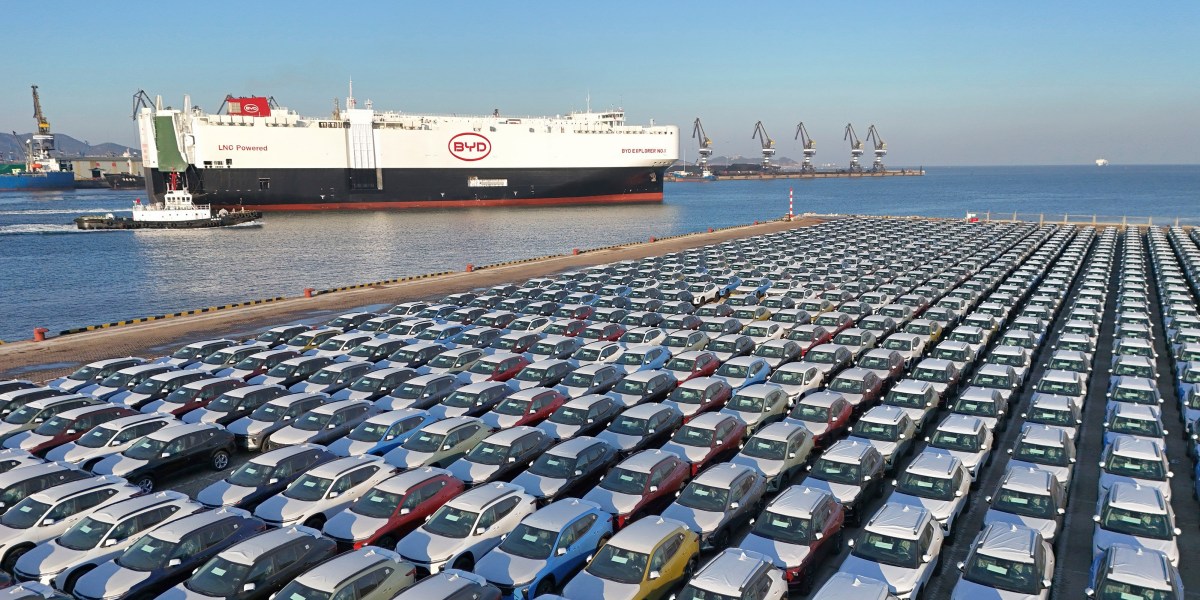Venturing out by themselves
That’s why Chinese auto companies, which have become such prominent exporters thanks to the rise of EVs, are starting to form their own shipping businesses.
News that BYD was looking to buy or charter ships was first reported by the shipping outlet Lloyd’s List in late 2022. In December that year, the company changed its corporate registration to include the business of international cargo shipping and ship management. MIT Technology Review contacted BYD for comment, but it did not respond in time for publication.
BYD Explorer No.1 was delivered at the beginning of this year. The RORO vessel, which can carry 7,000 cars at the same time, is officially registered under Zodiac Maritime, a UK company controlled by the Israeli shipping tycoon Eyal Ofer, but BYD has leased it for an undisclosed period of time. In a press release, BYD says it plans to add seven more vessels to the fleet in the next two years. It also plans to let other companies export their vehicles using BYD’s ships, it says.
For its maiden voyage, the ship is carrying over 5,000 BYD vehicles and heading toward the ports of Vlissingen in the Netherlands and Bremerhaven in Germany, according to Chinese state media outlet Xinhua.
BYD is not the only Chinese automaker making this move. SAIC Motor, a Chinese state-owned company, sold 1.2 million vehicles overseas in 2023, 24% of which were EVs. It formed a RORO shipping subsidiary in 2021, and its newest RORO vessel, the largest of its kind and able to carry 7,600 cars, also set sail for the first time in January. Like BYD Explorer No.1, it’s going to Europe.
While BYD has announced that it will add energy-storing battery tech to its vessels, the RORO ships it’s chartering today are not electric yet. Most of the newer ships can be powered by either traditional fuel or liquefied natural gas, which is a cleaner energy source.
From carrying wood pulp to cars
It will be some time before these Chinese companies finish assembling their sea freight empires, as these massive new ships take years to build. In the meantime, some have turned to creative fixes for the supply shortage: repurposing ships that were designed for other types of cargo.
Particularly, they have their eyes on gigantic ships typically used to import thousands of tons of wood pulp from South America to China, where it’s made into everyday products like tissue, paper, and books. These wood-pulp carriers often end up empty or barely loaded on the way back, because China doesn’t have similar products to export.
#worlds #biggest #maker #shipping





